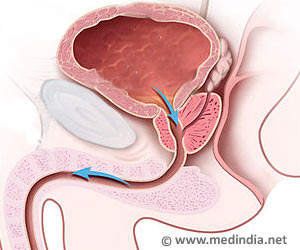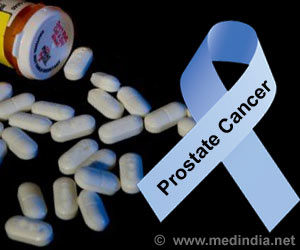A study of nearly 500 men suggests that shrinking the prostate without surgery can provide long-term relief to men with this common condition that causes annoying symptoms, such as frequent trips to the bathroom.

"The results of prostate artery embolization (PAE) are similar to surgery but with fewer complications," said Martins Pisco, M.D., Ph.D., lead author of the study and director of radiology at Saint Louis Hospital, Lisbon, Portugal. "Patients are discharged three to six hours after the treatment with most of the individuals we've treated noting almost immediate symptom relief," he said, adding, "I believe PAE could eventually become standard treatment for enlarged prostate."
As a man ages, the prostate gland slowly grows bigger (or enlarges) and may press on the urethra and cause the flow of urine to be slower and less forceful. Enlarged prostates cause urinary frequency, urgency, passing urine more often (particularly at night), weakened stream and incomplete bladder emptying.
"Such symptoms can have significant negative impact in quality of life, leading many men to seek treatment," said Pisco, noting that this condition affects more than half of men by age 60. The standard treatment for benign prostatic hyperplasia or BPH, which is the medical name for enlarged prostate, is surgery, which requires general anesthesia and can cause complications, such as urinary incontinence, sexual dysfunction, impotence and retrograde ejaculation, in which semen enters into the bladder. PAE, which can be performed under local anesthesia, involves temporarily blocking blood flow to the arteries that supply the prostate, a treatment called embolization, explained Pisco.
"Our study confirmed that PAE does not cause sexual dysfunction and preserves fertility," said Pisco, who indicated that this is the largest study of its kind. In fact, 148 (31.6 percent) of our treated patients reported improved sexual function, he noted. "We also found that the larger the prostate and the more severe the symptoms are, the better the results of PAE," said Pisco.
Success rates in 469 patients (ages 45−89) treated with PAE were as follows: 87.2 percent at three months, 80.2 percent at 18 months and 72.3 percent at three years. One patient suffered from lack of blood flow to the bladder wall that was corrected by surgery, and one patient had pain that lasted three months. In cases where the problem recurred, it often could be re-treated with PAE, Pisco said.
Advertisement
"These results are very promising for American men," said SIR President-elect James B. Spies, M.D., MPH, FSIR. Spies, who is a principal investigator on one the ongoing U.S. PAE trials, noted that this treatment is an advanced embolization procedure requiring rigorous training and a detailed knowledge of the prostate anatomy and surrounding vessels. "Interventional radiologists are leaders in bringing forth new treatments such as these responsibly," said Spies, chair of the radiology department at Medstar Georgetown University Hospital and professor of radiology at Georgetown University Medical Center in Washington, D.C. He noted that additional study is needed to further establish the safety, efficacy and durability of this treatment before it will become broadly available in clinical practice.
Advertisement






![Prostate Specific Antigen [PSA] Prostate Specific Antigen [PSA]](https://www.medindia.net/images/common/patientinfo/120_100/prostate-specific-antigen.jpg)






